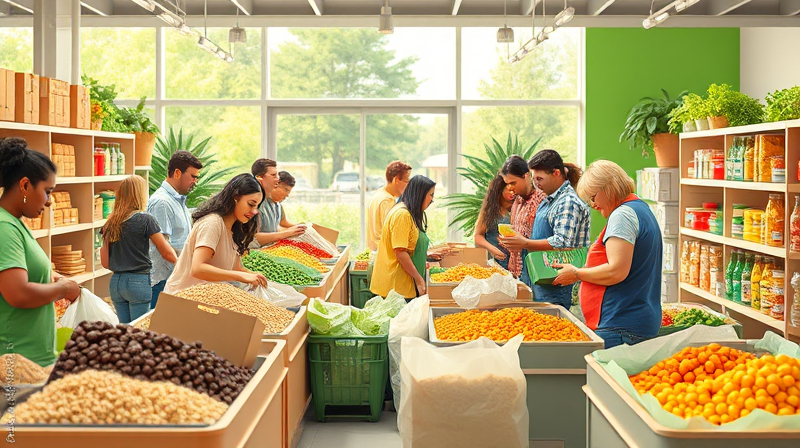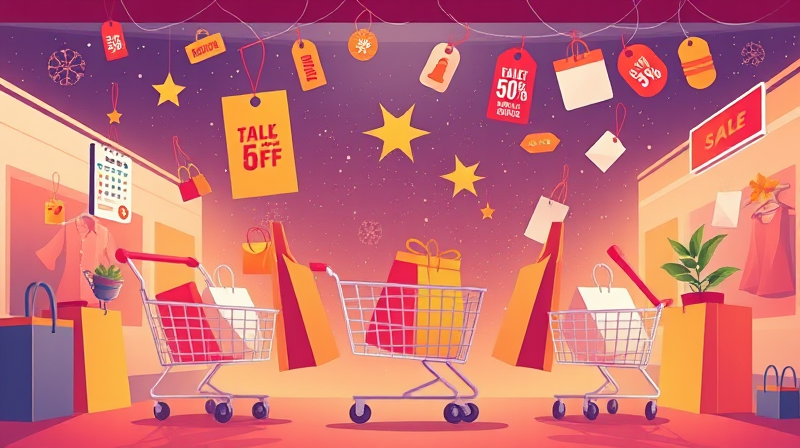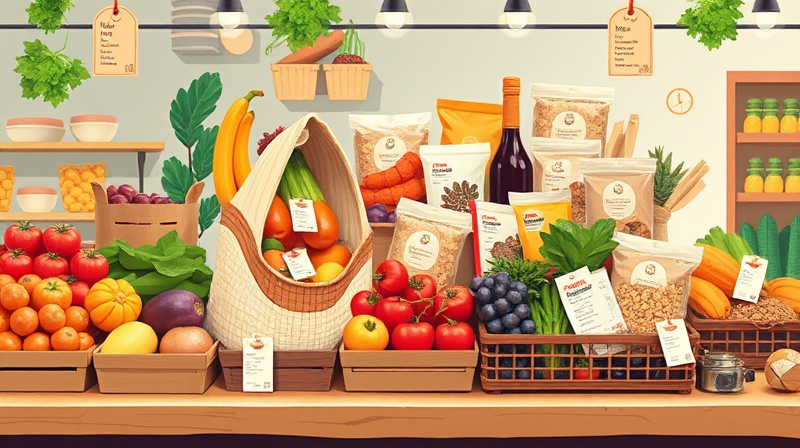Embracing bulk purchasing is not just a savvy exercise in saving money—it is also a commitment to a sustainable lifestyle. In today’s world, where every penny counts and environmental impact is a major concern, learning the art and science of buying in bulk is essential. With rising costs and increasing waste, this guide is designed to help you shop smarter while playing a crucial role in preserving our planet.
Bulk buying is more than simply filling up your pantry with large quantities of food or basic supplies. It's about being intentional, planning ahead and making decisions that benefit both your wallet and Mother Earth. When you purchase in bulk, you not only benefit from lower unit prices but also reduce the amount of packaging waste, contributing to a cleaner environment.
Plan and Prepare for a Successful Bulk Purchase
Preparation is the key to effective bulk buying. Before you start, assess your household's needs and storage space. Creating a targeted shopping list ensures that you only buy items that will be used regularly. This planning step can significantly cut down on waste and prevent impulse purchases.
Make an effort to inventory your current supplies. Knowing precisely what you already have helps avoid duplicating efforts and buying more than necessary. Start small. For example, begin by purchasing one or two key items in bulk. Gradually, as you become more comfortable and confident with your bulk buying strategy, you can expand your list.
Smart Shopping: Compare and Choose the Right Items
One of the most fundamental tips in bulk purchasing is comparing unit prices. Often the most alluring deals are not necessarily the most cost-effective options. Instead of focusing solely on the total price, compare the cost per unit, such as price per ounce or pound, to truly understand the value you're receiving.
Not every product is ideal for buying in large quantities. For instance, pantry staples such as rice, beans, pasta, flour, and grains are perfect candidates because they have a long shelf life and are used daily. Non-perishable items, like canned goods and dried foods, are also excellent choices, as they remain stable over time without requiring special storage conditions.
- Pantry Staples: Rice, beans, pasta, flour, grains.
- Non-perishables: Canned goods, dried foods.
- Household Essentials: Toilet paper, cleaning supplies, personal care items.
Keep in mind that while bulk buying can open the door to significant discounts, it is important to choose the right items. Focus on products that you routinely use to maximize the benefits and minimize the risk of products going to waste.
Mastering Storage Techniques to Maximize Freshness
Proper storage is just as vital as making the right purchase decision. Investing in sturdy, airtight containers can dramatically extend the life of your bulk goods. Whether it's storing grains in cool, dry spaces or managing the freezer for frozen supplies, correct storage methods ensure that your products stay fresh and high-quality for as long as possible.
Consider your available space carefully when buying in bulk. If you have limited storage space, consider opting for items that will remain in your home over a longer period or those you can share with family and friends. This is particularly important for perishable items, where overbuying could lead to food spoilage and waste.
Collaborative Shopping: Splitting Costs and Sharing the Load
If capacity or consumption rates are a concern, bulk buying does not have to be a solo venture. Engage with family members or friends who might share your love for smart shopping and sustainable living. Splitting bulk items can ease the financial burden and reduce the amount of product that might go unused.
Collaborative bulk purchases mean that you can harness economies of scale without the risk of overstocking. This strategy not only makes bulk buying more enjoyable but also fosters a sense of community and resourcefulness among groups of like-minded individuals.
The Long-Term Benefits of Bulk Buying
Many aspects of bulk purchasing offer remarkable long-term benefits. While the initial cost might seem higher, the savings compound over time. For example, consider items such as quinoa available in larger bags. Although the upfront expense is more significant, the unit price drops considerably, allowing you to save substantial amounts over months and years.
Moreover, extending the lifespan of your bulk purchases with proper storage converts one-time savings into ongoing economic advantages. Expanding your cold storage, such as freezers, provides room to store meat, bread, and even seasonal produce, keeping them fresh and ready for use when the need arises.
Consider membership or wholesale stores if you are serious about bulk buying. Retailers like Costco, or even online options like Amazon and Boxed offer products in bulk at competitive rates. Weigh your shopping habits, and if you frequently purchase in large quantities, a membership could be a worthwhile investment that enhances your savings and expands your purchasing options.
With thoughtful strategies and disciplined shopping habits, bulk buying becomes a reliable method to create substantial long-term savings, transform your approach to consumption, and promote environmentally friendly practices.
Adapting to this new way of shopping may require some initial adjustments, but the rewards are undeniable. Not only do you reduce costs and minimize waste, but you also make a tangible contribution to sustainability efforts. Every product saved from excess packaging is a small victory toward a healthier planet.
Ultimately, the bulk buying method invites a reconsideration of consumer habits. It encourages purposeful purchasing decisions, nurtures a shared sense of responsibility within our communities, and underlines the importance of sustainability in everyday choices. Let the journey to smarter shopping and a greener lifestyle begin with these simple yet powerful tips.







